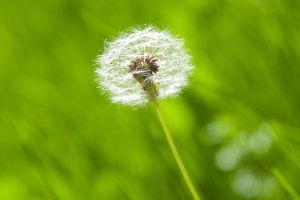Nature's treasury is adorned with a myriad of plant species, each with its unique charm and medicinal properties.
Among these botanical wonders is the Carolina Cranesbill (Geranium carolinianum), a herbaceous perennial that captivates with its delicate blooms and multifaceted uses.
This essay delves into the world of Carolina Cranesbill, exploring its characteristics, habitats, historical significance, and the various ways it contributes to both ecosystems and human well-being.
Characteristics and Appearance:
Carolina Cranesbill, belonging to the Geranium genus, boasts distinctive features that make it stand out in the botanical landscape. The plant typically reaches a height of 12 to 18 inches, forming sprawling stems with deeply lobed leaves. The leaves are palmately divided, resembling the cranesbill or beak-like structure, from which the plant derives its common name.
One of the most enchanting aspects of Carolina Cranesbill is its flowers. The plant produces small, five-petaled blooms with vibrant hues ranging from shades of pink to deep purple. The delicate petals surround a cluster of protruding stamens, creating an intricate and visually appealing display. The flowering season spans from late spring to early fall, adding a burst of color to its surroundings.
Habitat and Distribution:
Carolina Cranesbill is a versatile species that thrives in a variety of environments. Native to North America, it can be found across a broad range of habitats, including meadows, fields, roadsides, and open woodlands. The plant demonstrates a remarkable ability to adapt to different soil types, making it a resilient and widespread species.
Historical Significance:
Beyond its aesthetic appeal, Carolina Cranesbill holds historical significance. Indigenous peoples and early settlers recognized the plant's medicinal properties and employed it for various purposes. Native American tribes, in particular, utilized different parts of the plant to address ailments ranging from digestive issues to skin conditions.
Uses in Traditional Medicine:
Carolina Cranesbill has found a place in traditional herbal medicine for its potential health benefits. The roots of the plant contain tannins and astringent properties, leading to its historical use in treating diarrhea and other gastrointestinal discomforts.
Additionally, the herb was employed externally to address skin irritations, showcasing the versatile healing properties attributed to this botanical gem.
Ecosystem Benefits:
Carolina Cranesbill contributes significantly to its surrounding ecosystem. As a native plant, it supports local biodiversity by providing nectar for pollinators such as bees and butterflies. The plant's ability to adapt and thrive in diverse environments also aids in soil stabilization and erosion control. Its presence in natural habitats enhances the overall health and resilience of ecosystems.
Cultivation and Garden Use:
For those interested in cultivating Carolina Cranesbill, its adaptability makes it a suitable addition to gardens and landscapes. The plant prefers well-drained soil and partial to full sunlight, making it an excellent choice for a variety of garden settings. Gardeners appreciate the low maintenance requirements and the aesthetic appeal that Carolina Cranesbill brings to flower beds and borders.
The Carolina Cranesbill herb stands as a botanical wonder, blending beauty, adaptability, and historical significance. Its delicate blooms and medicinal properties underscore its importance in both natural ecosystems and traditional medicine.
As we continue to explore the wonders of the natural world, the Carolina Cranesbill remains a captivating example of the intricate relationships between plants, humans, and the environment. Whether gracing open meadows or adorning garden landscapes, this herbaceous perennial enriches our connection with nature and invites us to appreciate the intricate tapestry of life.


